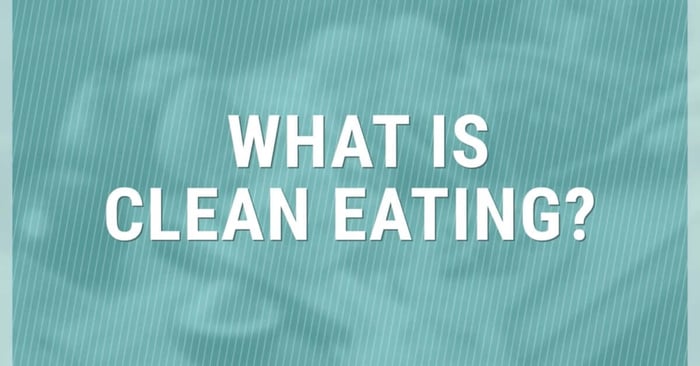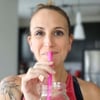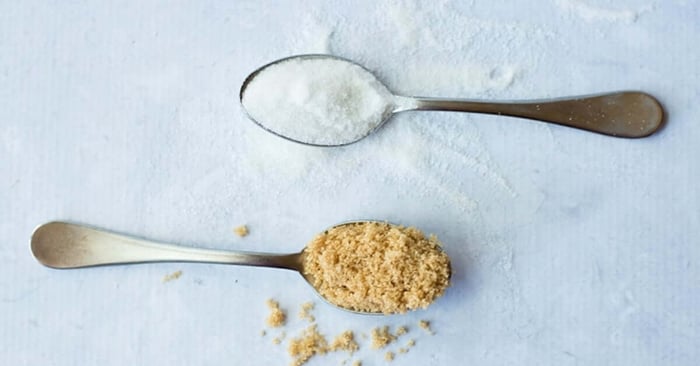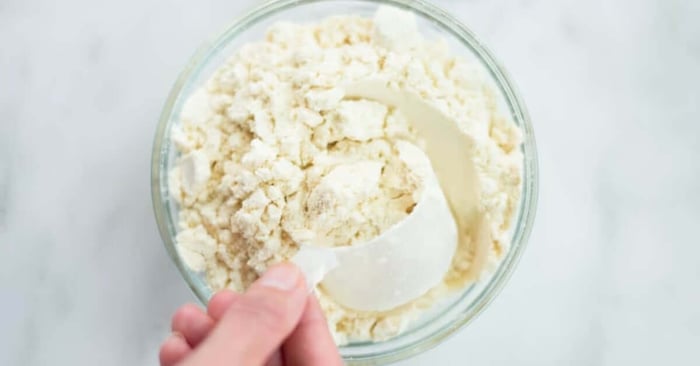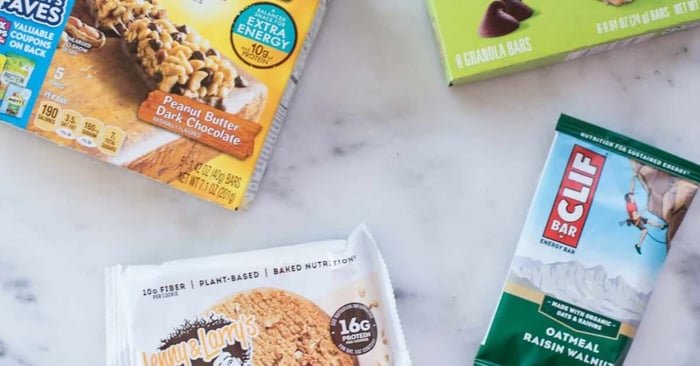Eating Clean for Beginners can feel overwhelming at first, but it doesn’t have to be. Here’s how I simplified clean eating — and what actually works when you’re just getting started.
Just getting started with clean eating? Don’t miss these other beginner-friendly posts to help you keep going: How To Quit Sugar, Protein Powder | The Ultimate Guide For Beginners, and my 6 Ways To Find Hidden Sugars.
In This Post You'll Find:
Eating clean gives you control over food because you don't get sucked into craving all the bad sugars, salts, and fats you don't need. If you need help on quitting sugar try checking out my post How To Quit Sugar or if you need help on how and what to use Protein Powder for, try checking out my post Protein Powder | The Ultimate Guide For Beginners. Instead, you choose what you put into your body and that gives you a sense of accomplishment, power, and health. Eating clean gets easier and easier once you understand the basic concepts, too.

What Is Clean Eating?
The major key to understand about eating clean for beginners is that it's more of a lifestyle than a "diet." By that, I mean eating clean isn't a get skinny quick kinda thing. Instead, it's a way to approach how you eat and what you put in your body. Clean eating involves choosing whole foods, avoiding processed foods, and creating a healthy, conscientious approach to what foods you eat.
This means embracing vegetables, whole foods, unrefined grains, lean proteins, and healthy fats. The focus is on the quality of the food being consumed and the benefits these foods offer your overall health. The idea is to combine the clean eating lifestyle with an active life.
One meal at a time, you'll find clean eating will make you a healthier, happier person. You’ll find that you crave “sweets” less and that foods high in saturated fat really aren’t that satisfying any more.
For me, the best thing about the clean eating approach to food is that it’s not a diet, not about calorie restricting, and not about depriving yourself of things you love. It's about finding healthy ways to enjoy food and nutrition.
Here are 8 Great Guidelines for Getting Started Eating Clean.
Eating Clean For Beginners: 8 Guidelines
I wanted to share this post today to help explain how to eat clean for beginners who are interested in eating healthy and following the clean eating guidelines. So, let's go over those main guidelines for eating clean, shall we?
1. Cook Your Own Food.
The easiest way to control what goes into your food is to be the one who is preparing your food. That way, you can control the salt, sugar, flavors, and fats that go in and you can work to keep those levels as low as possible. Ever wonder why restaurant food tastes so much better than home-cooked food? It's because restaurants tend to add a boatload of salt and butter to everything they cook.
2. Read The Nutrition Labels.
When eating clean for beginners, you need to get pretty familiar with nutrition labels because they will tell you everything you need to know about the foods you're considering eating.
Look for labels with relatively few ingredients. Consider each ingredient in terms of, "Is this an ingredient I would cook with in my kitchen?" If not, pass.
Pay attention to and avoid foods with labels that include words like, "hydrolyzed," or "modified." These indicate added processing and words that end in "-ose" because those indicate added sugars (think fructose).
Look for labels with "whole grains" and "whole wheat" in the ingredients. If the food is high in calories, make sure the saturated fat and sugar levels are low and that the calories are coming from the fiber and lean proteins instead.
3. Eat Whole Foods.
Whole foods are foods that haven't been modified or tampered with in a lab or manufacturing plant. Since whole foods haven't been processed or refined, no added sugars, preservatives, dyes, fats (including hydrogenated fats), or salt have been added to the product to add extra flavor or enhance shelf life or appearance.
Whole foods include fresh fruits and vegetables, lean proteins, unsalted nuts/seeds, whole grains, full-fat dairy products, and dried beans/legumes. In addition to escaping the added and unnecessary junk from being processed, unrefined foods also carry more nutrients and fiber which is essential for your body to function. Make the food you're eating do more for you.
4. Avoid Processed Foods.
Processed foods are easy to identify since they often come in a box or jar. The problem with processed foods is that they are high in added sugars and salt, low in fiber and whole grains, and high in fat (including awful trans fats and saturated fats).Processed foods include snack foods (fruit snacks, chips), candy, cookies, frozen dinners, bottled salad dressing, breakfast cereal, canned soups, bacon, granola bars, instant ramen, and flavored nuts.
Instead of buying these items at the store for convenience, next time, try making them from scratch, using whole ingredients. Your body will thank you.
5. Eat Well-Balanced Meals.
Make sure the foods you are choosing contain the right amount of protein, carbs, and fats. All three are essential to your body functioning correctly. You want to be mindful of the breakdown of what you’re eating so you know what you’re putting into your body.
6. Limit Added Fat, Salt, and Sugars.
Clean eating has the intention of eating food in its most natural, whole state. It makes sense that you would want to avoid unnecessary additives, like fat, salt, and sugar when choosing your food.
Fresh fruit should be all the sugar you need once you are on a clean eating track. The more you follow the clean eating lifestyle, foods you once loved, like doughnuts, hamburgers, fries, and more will taste overly sweet or salty. This is because your body and tastebuds will be so used to the whole foods in your new lifestyle that these additives will taste needed and even overdone.
7. Eat 5-6 Meals Per Day.
Forget the concept of counting calories. That basic plan doesn’t take into account the value each calorie has. Instead, you want to make your calories count. Make mindful decisions for everything you choose to eat. Like lean protein, complex carbs (as opposed to sugar) and fats, fresh fruits, and vegetables -- six times a day in the right amounts. The typical clean diet usually includes three small main meals and two to three substantial snacks every day.
8. Don't Drink Your Calories.
While making mindful decisions about what foods to eat, you also need to be mindful about how much water you’re drinking. Water will likely be the number one thing you’re drinking all day, every day. You’ll find the more you drink, the thirstier you are for more. Drinking water will not only keep you hydrated but also allow your body to function well. But, it will also keep you from getting hungry.
How To Get Started Eating Clean
To start, take small steps. Don't go straight from drinking 5 sodas a day to only drinking water. That won't work and you will likely fail. Your body needs more of a gradual transition. Replace one of those sodas with a glass of water to start. Then, tomorrow, replace two, and so on. If you drink coffee every morning full of sweetened creamer and sugar, you will hate your coffee if you try drinking it black.
Try reducing the amount of sugar, and then the amount of creamer you use. You may find you don't even want coffee in a week or two (which is what happened to me).
Trust me - I've been there.
This is a new lifestyle, not an overnight fad so treat it that way and ease into it until you fully can embrace everything and then it will feel normal to eat clean.
Consider healthy, clean replacements for the foods you're used to. For example, eat an apple and a handful of unsalted almonds instead of a candy bar. Add greek yogurt instead of sour cream to your baked potato. Choose whole grain breads instead of white breads.
Every change you make towards eating clean is a positive change and, gradually, your body will get more and more used to the clean lifestyle. And your body will love it.
And you will feel awesome.
Good luck!
FAQs
Is Clean Eating Hard?
Eating clean itself isn’t the hard part — it’s saying no to the foods that don’t serve you. That’s where the real challenge is. It’s not about never having them again, but about learning when to say no and staying consistent. What helped me the most was following the 80/20 approach: I eat clean most of the time, but still enjoy meals out or treats here and there without guilt. That balance is what makes it sustainable.
How Long Does Clean Eating Take?
Clean eating isn't a two week method to have you in better shape, it's a lifestyle. One worth following in my opinion. It helps you get rid of all the unneccesary products in your diet and helps you feel better, and it most likely will start making a difference almost immediately, you'll feel better without all those ingredients bloating and making you feel bleh.

